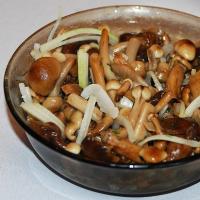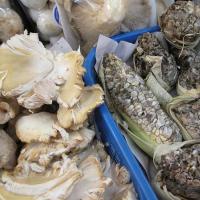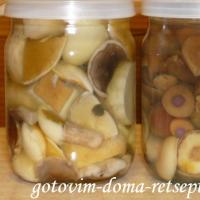Pale grebe / Edible mushrooms, berries, herbs
Pale grebe (otherwise green fly agaric) is the most dangerous and insidious deadly poisonous mushroom. A modest deceptive appearance and a killer filling make mushroom pickers approach the collection of edible mushrooms that look like a pale toadstool very responsibly.
The cap is ovoid to flat-convex, procumbent with age, 5-10 cm in diameter. The color of the cap is greenish to yellowish, in exceptional cases white. On the surface of the cap of a pale grebe at a young age, warts are scattered, in the form of white flakes, which disappear with time.
The plates are free, wide, white.
Leg 1.5-2 cm, cylindrical with a tuberous-widened base, white, yellowish or greenish, smooth or with scales. Volvo is cup-shaped, wide, free, white, usually torn at the top into 3-4 parts, similar to propeller blades. The ring is white at the top of the stem.
The aroma and taste of a young pale grebe are very pleasant, with old age the smell becomes unpleasant. Unlike some other poisonous mushrooms, thermal and other treatments do not eliminate the toxic effects of the poison. For fatal poisoning, it is enough to eat only a small part of the cap of a pale grebe. Poisoning can occur even from touching the mushroom. Poisonous spores remain on the hands, and if they didn’t wash their hands and, let’s say they ate a sandwich with these hands, then poisoning is guaranteed.
Where it grows: Deciduous and mixed forests.
When growing: From mid-July to late November.
What mushroom can be confused with: At a young age, the pale grebe can be confused with edible fly agaric floaters, which are distinguished by the absence of a ring on the stem, and some mushrooms, which are distinguished by pink, red or brown plates and the absence of volva. There are known cases of collecting pale grebe instead of russula with green fruiting bodies, when the pale grebe was cut very high, under the very hat, which made it impossible to detect the ring and volva when sorting mushrooms at home, distinguishing this poisonous mushroom from russula (see illustration below).
Symptoms of poisoning: Symptoms do not appear immediately, but in the period from 5 to 48 hours. Vomiting, burning pains in the muscles, intestinal colic, insatiable thirst, diarrhea with blood. The pulse is very weak, thready, blood pressure is low, the poisoned person loses consciousness. As a result, death occurs in most cases.
Description of the pale grebe (Amanita phalloides)








Photos of the pale grebe (Amanita phalloides)
![]()


The main differences between pale grebe and green russula


A video that allows you to better examine the pale grebe, see how it grows, looks, what it is



